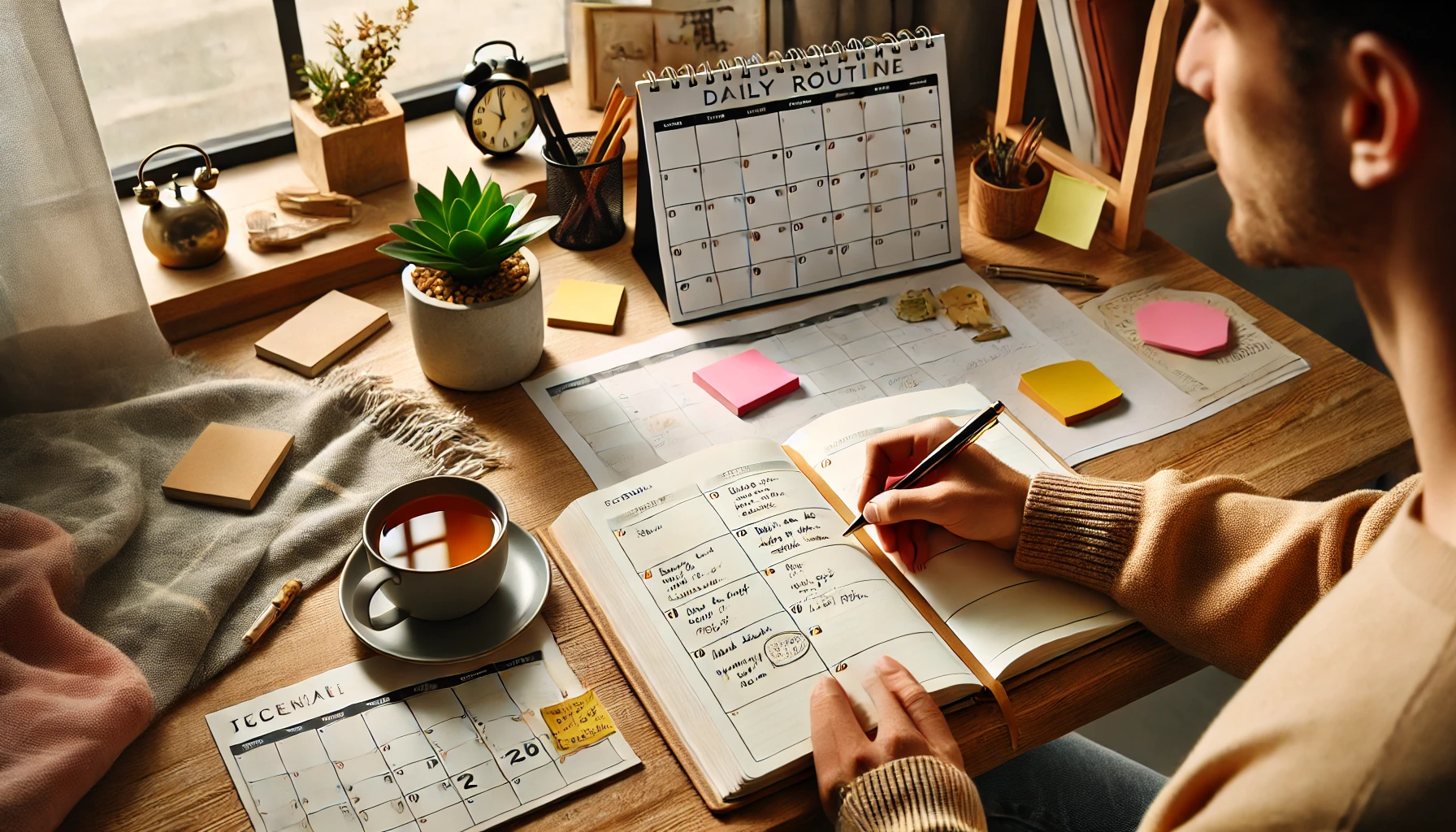Routines are powerful. They reduce decision fatigue, create structure, and make consistency easier.
But here’s the truth: a routine only works if it works for you.
Copying someone else’s 5 a.m. schedule might sound productive—but if it doesn’t match your energy, lifestyle, or goals, it won’t last. The best routine is one that supports your rhythm, not someone else’s.
In this article, you’ll learn how to build a flexible, sustainable routine that fits your life—and helps you thrive.
Why Routines Help You Grow
When done right, routines:
- Save mental energy
- Help automate good habits
- Create flow and momentum
- Support goal achievement
- Reduce stress and overwhelm
Instead of constantly wondering “What should I do now?”—you know what comes next.
Step 1: Define Your Priorities
Start with what matters most—not what looks productive on paper.
Ask yourself:
- What goals am I working toward?
- What habits support those goals?
- What do I want more (or less) of in my day?
Examples:
- Focus time for deep work
- Movement or exercise
- Creative expression
- Time with family
- Mental clarity or spiritual connection
Your routine should reflect your values, not just tasks.
Step 2: Identify Your Natural Energy Patterns
Some people thrive early in the day. Others focus better in the afternoon or evening.
Track your energy for a few days:
- When do you feel most focused?
- When do you tend to crash?
- When are you naturally creative?
💡 Design your routine around energy—not just the clock.
Step 3: Choose Anchor Points (Not a Minute-by-Minute Plan)
Instead of planning every minute, set anchor points—key actions that shape your day.
Examples:
- Morning routine (wake up, water, journaling)
- Start-of-work ritual (review tasks, plan focus blocks)
- Midday reset (walk, stretch, eat)
- Evening wind-down (screen-free, journal, prepare for tomorrow)
This creates structure with flexibility.
Step 4: Stack Habits Into Your Routine
Use habit stacking to build momentum:
Formula:
After I [existing habit], I will [new habit].
Examples:
- After brushing my teeth, I’ll stretch for 2 minutes
- After making coffee, I’ll write down 3 priorities
- After shutting my laptop, I’ll tidy my workspace
This makes new habits easier to remember and repeat.
Step 5: Test, Tweak, Repeat
Your first routine won’t be perfect—and that’s okay.
Try it for a week, then ask:
- What felt good?
- What felt forced?
- Where did I fall off, and why?
Adjust and try again. A routine is a living system—not a strict formula.
Step 6: Protect Your Routine with Boundaries
It’s easy to let other people’s demands derail your plans.
To protect your routine:
- Block focus time in your calendar
- Turn off unnecessary notifications
- Communicate your schedule to others
- Say no to things that don’t fit your values
⛔ Your routine won’t work unless you protect the space for it.
Step 7: Build in Rest and Joy
A good routine isn’t just about productivity. It also supports your mental health and quality of life.
Make space for:
- Breaks
- Play
- Movement
- Nature
- Connection with others
Sustainable routines nourish you—they don’t drain you.
Final Thoughts: Routines Are Personal Power
The right routine can change everything—but only if it’s built around who you are, what you value, and how you work best.
Start simple. Choose a few anchors. Add habits slowly. Adjust often.
Because when your routine works for you, it becomes more than a schedule—it becomes a foundation for success.

Daniel Carter believes that small daily changes lead to extraordinary results. Through simple and effective strategies, he inspires readers to take control of their routines, overcome procrastination, and unlock their full potential.











